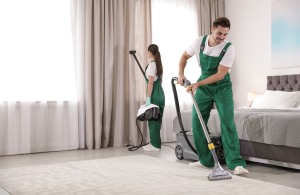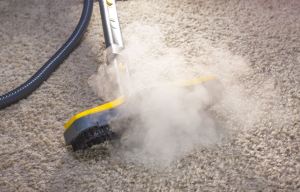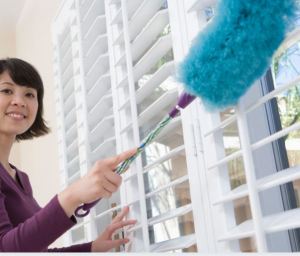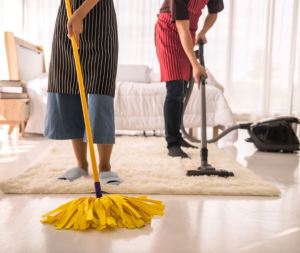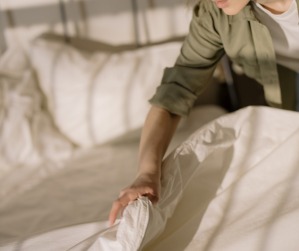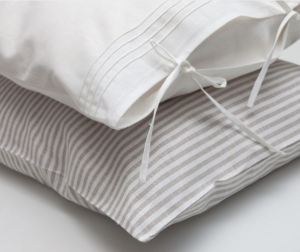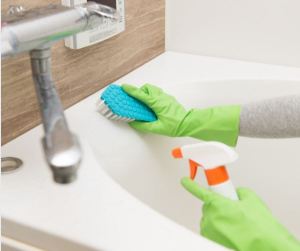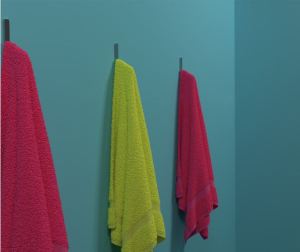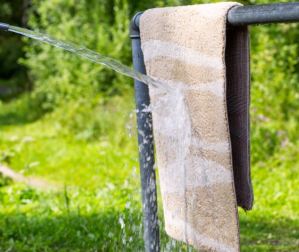Tips on Getting Rid Of Dust Mites Through Cleaning and Laundry
Have you ever wondered where dust mites come from, why they exist and how can you get rid of them? This article will definitely help you with getting rid of dust mites.
We all know that dust is all around us in our homes, workplace, vehicles, and where there are humans and dust, there are dust mites…Dust mites are also known as bed mites. They are tiny insects that feed off dead skin flakes found on bed sheets, pillows, fabric, and specks of dust around your home. Although they don’t bite like bed bugs or head lice or spread disease, they can worsen allergies and asthma. It is the waste matter from the mites that cause allergic responses.
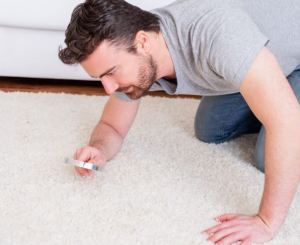
Dust mites are too small to be seen with the naked eye. Since they are so small, they float into the air when a fabric is disturbed, carpet is walked on, or when a vacuum is used. It is when they float that the dust mite droppings and pieces of dead dust mites most trigger allergies and can even cause asthma.
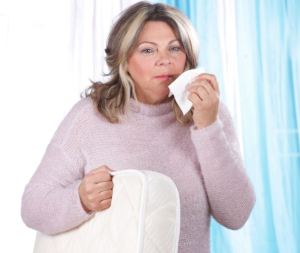
The Highest Concentrations of Dust Mites are Found in the Following:
- Carpeting
- Mattresses
- Bedding
- Upholstered Furniture
- Stuffed Animals
Allergens can be any substance that causes an allergic reaction.
Common Household Allergens
- dust mites
- insect droppings
- pollen
- pet dander
- molds

Luckily, there are many methods that you can reduce the misery by cleaning correctly to remove allergens. Regular weekly cleaning of your home is an important part of an allergy management plan.
In the Living Room
Living spaces at home should be cleaned at least weekly. It is recommended to vacuum the carpet every other day to capture the most allergens.
- Start cleaning at the top of the room so that dust and allergens drift down to be captured by a damp mop or vacuum.
- If you have plants, cover the soil with decorative rocks or marbles to help contain the natural molds that can grow in damp soil. Artificial plants should be dusted weekly and periodically given a shower to remove dust.
- Rather than use chemical air fresheners, consider simmering citrus peels or spices like cinnamon and nutmeg to freshen the air.
The Key to Controlling Dust Mites
Minimize the number of places they can thrive. One of the best steps that you can do is removing wall-to-wall carpeting. Nonetheless, it is also essential to regularly clean area rugs and washes throw rugs.
- If you do have wall-to-wall carpet, have it steam cleaned regularly because the heat of the steam will kill the dust mites.
- Choose leather or vinyl upholstery rather than fabric. Or, make the upholstery easier to clean by using washable accessories like sofa covers and removable covers on throw pillows. Use a dust mite sanitizer vacuum on fabrics that cannot be washed.
- Skip heavy drapes that can not be washed. Opt for washable fabrics, shades, blinds, or shutters.
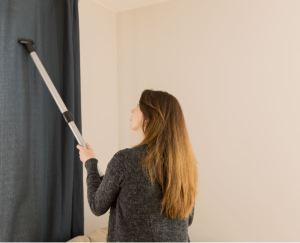
In the Bedroom
The bedroom is the number one space where dust mites can be found. It is because of the bed linens, bed sheets, pillows, comforters, and duvet covers are the perfect materials for dust mites to thrive.
The best way to minimize the number of dust mite droppings is by doing laundry often and handling fabrics correctly. Thus, it is also vital to choose linens that can withstand frequent washing.
- Clean the bedroom weekly, starting at the top and working down.
- Dust ceiling fans and light fixtures, blinds, and/or wash curtains. Dust any furniture and use the hand tools, vacuum upholstered furniture.
- Vacuum the floor including the spaces under the bed and furniture.
- For the fewest allergens, remove wall-to-wall carpeting and use hardwood or solid tile flooring and washable area rugs in the bedroom.
- Clean your closet by taking out all the clothes or other items and clean the closet from the inside. Use a vacuum cleaner or manually wipe off traces of dust or dirt on the surface.
- Pay close attention to the corners of the closet and make sure that there are no dust bunnies present or huddled up in the corner.
- Keep closet doors closed to reduce the transfer of allergens from clothing. Use covered plastic bins that can be cleaned easily to store unused items.
- If you have dust mites problems in the bedroom, the bedsheets, blankets, and bed covers should be changed frequently and washed at least weekly in hot water (130 to 140 F) to kill the bed mites.
- Coldwater will not always remove the allergens. However, if you prefer to use cold water, be sure to tumble dry the linens in a hot dryer for at least ten consecutive minutes at 130 F to kill the mites.
- Changing the pillowcases more frequently like every other day is highly recommended for those with allergies and asthma.
- There are also some fabric-covered items like mattresses, box springs, and upholstered furniture that cannot be easily washed. To remove dust mites, consider a fabric allergen sanitizer vacuum.
In the Bathroom
The humidity of the bathroom helps reduce dry skin and will cause the dust mites to thrive. The most dangerous allergens in bathrooms are mold and mildew.
- You can remove mildew growth with chlorine bleach, hydrogen peroxide, or a commercial mildew cleaner. Keep in mind always to read directions carefully and NEVER mix different chemicals.
- To remove mildew build-up, mix a solution of three parts water to one part bleach. Wear rubber gloves and ventilate the area well, use a stiff brush to scrub the affected areas.
- For tight corners, saturate paper towels with the bleach/water solution and apply the towels to the mold. Allow them to remain in place for ten to 15 minutes and then scrub and rinse.
- After every use, towel-dry the tub or shower enclosure. Check the tub, showerhead, sink, and toilet fixtures frequently for leaks and repair immediately.
- Always hang towels to dry between uses. Towels and bath mats should be washed at least after two or three uses and in hot water.
- Wash rugs, bathmats, and shower curtains frequently to inhibit mildew growth.
- If you have a child with asthma or allergies, stuffed toys should be washed frequently – especially if the child sleeps with the toy. Most fabric toys can also be cleaned.
The acts of cleaning especially if it hasn’t been done in quite a while can trigger allergy symptoms as dust and other allergens are stirred up.
CLEANING is essential and should never be neglected especially for several weeks.

For your laundry needs, let Lucy’s Laundry and Dry Cleaning be a part of your cleaning routine. We know how to take care of and clean any kind of fabric. We pick up, wash, dry, fold, and deliver all in 24 hours so you can get back to doing the things you love!
We offer 20% OFF on your next load of laundry and ONE Comforter cleaned for FREE! Schedule your laundry appointment today!



